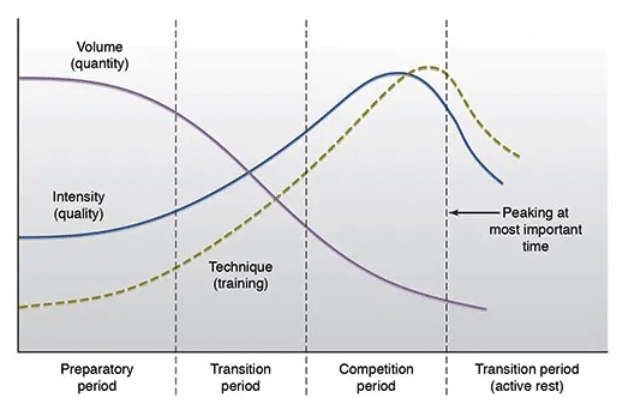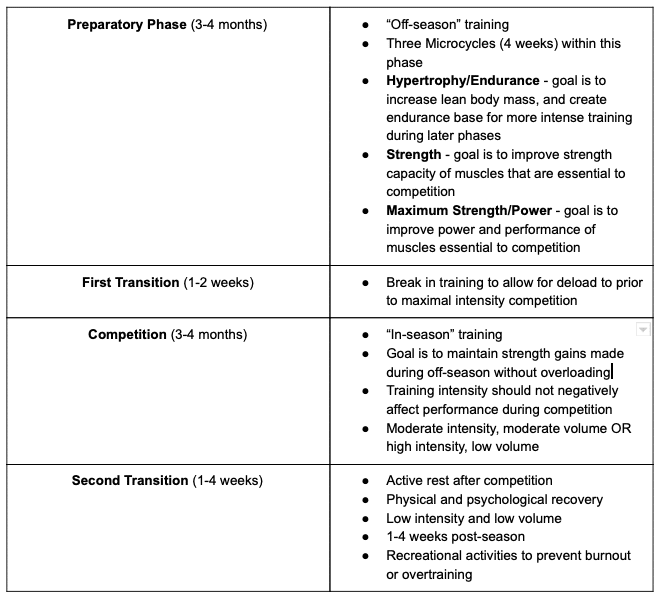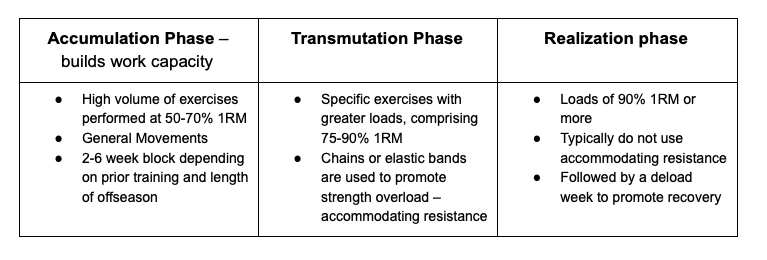Periodization for Peak Performance
Periodization is the best for peak performance. All competitive athletes want to improve their in-season performance. However, off-season training leads to improvement in performance. Thankfully, there are several different approaches to strength training to allow for peak performance. Most paradigms involve some form of this training. The purpose is to maximize several different athletic qualities throughout the training process. Strength is the foundation for all other physical athletic qualities such as power, speed, and agility.
Periodization manipulates training variables for optimal expression of these athletic qualities. This helps to peak your performance during the competitive season. At Symmetry, we can do performance testing & functional improvement screening to help you optimize your training. We can do this either in clinic or through virtual physical therapy.
What is Periodization?
Periodization implements planned changes within an overall cycle to train different athletic qualities. For instance, the intensity, specificity, velocity, and rest intervals vary. Above all, it would be throughout a given period of time to allow for peak performance. Three popular types of periodization are: linear (traditional), non-linear, and block.

General Training Dosage Guidelines

What is Linear Periodization?
Phases within a periodized exercise program include a macrocycle, mesocycles, and microcycles. Macrocycles typically encompass one calendar year. But, macrocycles can be longer for Olympic sport athletes.
Linear uses specific training windows within a mesocycle to train a specific intensity, load, volume, or specificity. Additionally, it follows a progression throughout the year through four periods of time. These include: Preparatory, First Transition, Competition, and Second Transition.
- Macrocycle = 12+ months
- Mesocycle = 3-4 months
- Microcycle = 1-4 weeks

Example of training blocks within preparatory phases:
- Hypertrophy/Endurance: 3×12; 4×8 at 55-70% 1RM
- Strength: 4×3; 4×6 at 80-85% 1RM
- Maximal Strength/Power: 6×1; 3×3; 5×2 at 90% 1RM
Non-Linear Periodization
Meanwhile, through this multiple qualities can be trained at the same time. For instance, variables are altered daily, weekly, or biweekly to train strength. As a result, this style of training may help to decrease risk of overtraining. In addition, this philosophy allows athletes to modify workouts. Ideally, this would be based on their recovery from prior training or competition.
Unfortunately, some may argue that non-linear does not allow for each characteristic to optimally be trained. Simply because the variables are changing too frequently. However, most studies have shown that there is no difference in effectiveness. See below for an example of three workouts within a week of a non-linear workout program:
- 4×5 at 80% 1RM with Zone 3 training intensity
- 3×12 at 50% 1RM with Zone 1-2 training intensity
- 3×8 at 70% 1RM with Zone 2 training intensity
Block Periodization
Block involves training a specific quality in a hyper-specialized period. Most importantly, their exercise prescription is focused on specific, targeted athletic qualities. Traditional models operate under the assumption that athletes have to peak at one certain point in the season. However, many athletes have to be at their best multiple points in the year. Basic qualities, like strength, may decline throughout the season with the traditional models.
It’s possible due to the long-lasting delayed training effect concept. Power and strength can be maintained for 30 days without training. Therefore, we can manipulate training these qualities. This would be done by separating the small blocks to last 2-4 weeks.
Meanwhile, still maintaining your gains from a previous training block. Athletes may be able to train strength, power, endurance, and peak within a 1-2 month period. In contrast, this may take 3-4 months utilizing traditional methods. There are three phases of block periodization which include:

Which Approach Is Best?
In other words, it does not matter which type of periodized training that you choose. In addition, track your performance to continually progress each week. Lastly, these approaches allow you to continue to push yourself to work on different qualities throughout the year and address your weaknesses. Therefore, whichever program you choose will require you to make a plan, track your progress, get strong, and repeat.
Written By: Team Symmetry
- Lorenz D, Morrison S. CURRENT CONCEPTS IN PERIODIZATION OF STRENGTH AND CONDITIONING FOR THE SPORTS PHYSICAL THERAPIST. Int J Sports Phys Ther. 2015;10(6):734-47.
